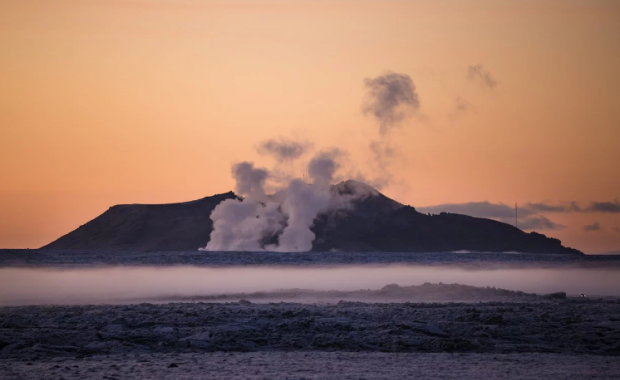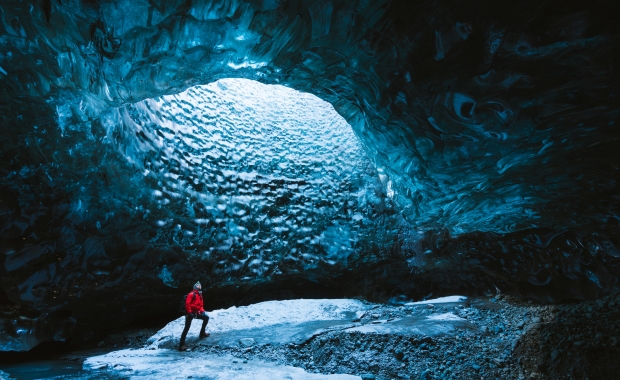The eruption in Holuhraun lava field is 50 times larger than Friday's eruption. It started shortly after 4 (4am) on the same volcanic fissure, which erupted on Friday. The fissure is estimated to be 1.500 meters (4.921 ft) long with glowing lava shooting up to 60 meters (196 ft) into to the sky.
Weather conditions do not allow surveillance flights at this time and make it difficult to follow the progression of the eruption. However scientists are in the area, using every opportunity to acquire information on gas and lava outflow.
According to a new report by the Scientific Advisory Board (SAB) of the Icelandic Civil Protection it was detected on Míla´s webcam at 5.51 (5.51am). Scientists from the Icelandic Met Office (IMO) and the Institute of Earth Sciences and representatives of the Civil Protection form the SAB.
Fewer earthquakes seem to follow the event than in the previous eruption, but more lava is being extruded.
IMO reports that at 7 (7am) the lava flow was around 1 km (0.62 mi) wide and 3 km (3.8 mi) long towards northeast. The thickness was estimated a few meters, the flow about 1.000 m3 (cubic meters) pr second or 35.315 ft3 (cubic feets) per second.
Approximately 500 earthquakes were detected in the area and smaller than before. The strongest earthquake, M3.8 was in the Bárðarbunga caldera in Vatnajökull glacier. Poor weather conditions prevail in the area, which makes detection of smaller earthquakes difficult.
The Aviation Colour Code for Bárðarbunga is at ‘red' and the code for Askja at ‘yellow'. All airports in Iceland remain open.
You can watch the Holuhraun lava eruption live in Míla´s webcam.
The eruption in Holuhraun lava field is 50 times larger than Friday's eruption. It started shortly after 4 (4am) on the same volcanic fissure, which erupted on Friday. The fissure is estimated to be 1.500 meters (4.921 ft) long with glowing lava shooting up to 60 meters (196 ft) into to the sky.
Weather conditions do not allow surveillance flights at this time and make it difficult to follow the progression of the eruption. However scientists are in the area, using every opportunity to acquire information on gas and lava outflow.
According to a new report by the Scientific Advisory Board (SAB) of the Icelandic Civil Protection it was detected on Míla´s webcam at 5.51 (5.51am). Scientists from the Icelandic Met Office (IMO) and the Institute of Earth Sciences and representatives of the Civil Protection form the SAB.
Fewer earthquakes seem to follow the event than in the previous eruption, but more lava is being extruded.
IMO reports that at 7 (7am) the lava flow was around 1 km (0.62 mi) wide and 3 km (3.8 mi) long towards northeast. The thickness was estimated a few meters, the flow about 1.000 m3 (cubic meters) pr second or 35.315 ft3 (cubic feets) per second.
Approximately 500 earthquakes were detected in the area and smaller than before. The strongest earthquake, M3.8 was in the Bárðarbunga caldera in Vatnajökull glacier. Poor weather conditions prevail in the area, which makes detection of smaller earthquakes difficult.
The Aviation Colour Code for Bárðarbunga is at ‘red' and the code for Askja at ‘yellow'. All airports in Iceland remain open.
You can watch the Holuhraun lava eruption live in Míla´s webcam.






